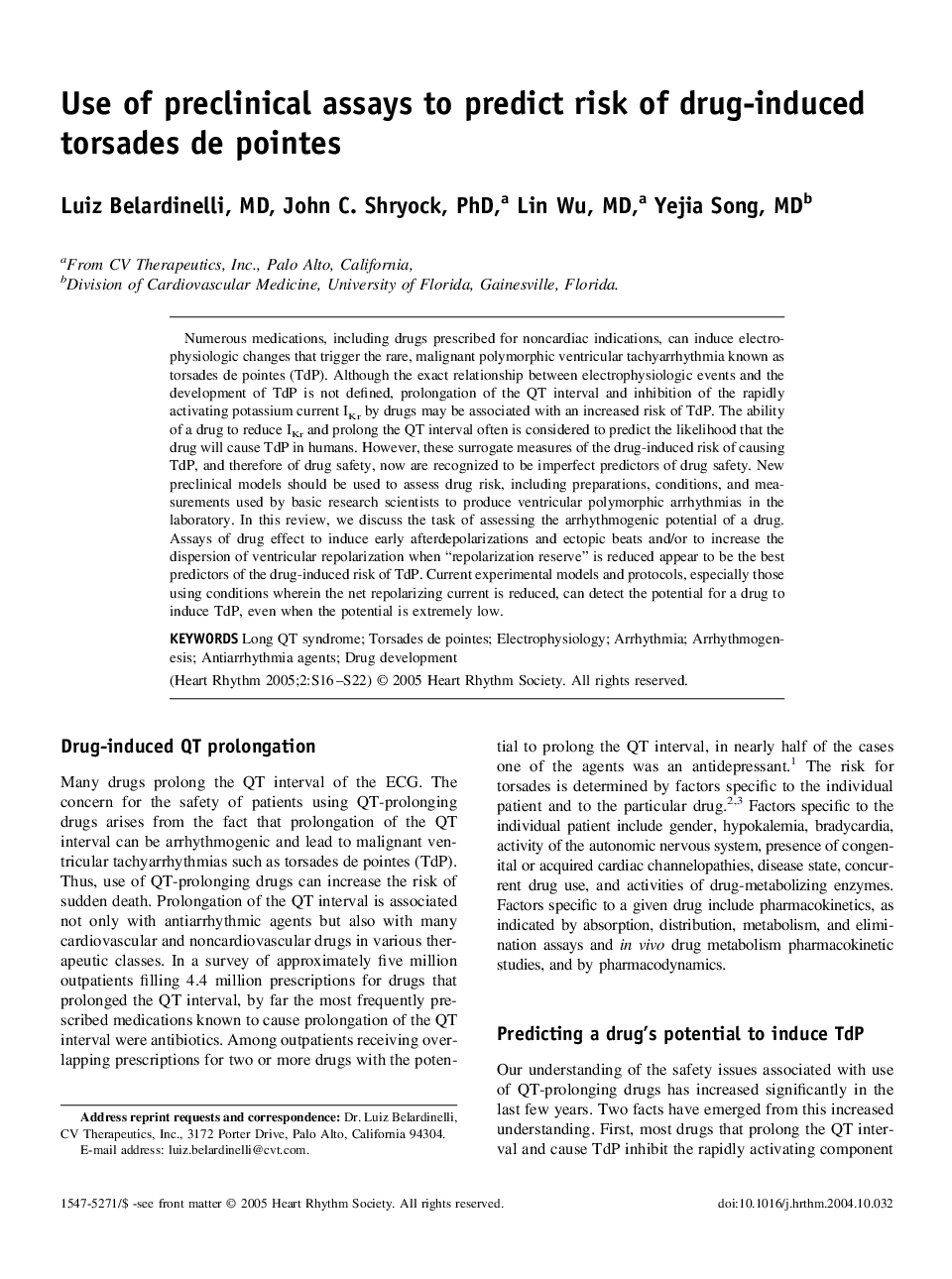| کد مقاله | کد نشریه | سال انتشار | مقاله انگلیسی | نسخه تمام متن |
|---|---|---|---|---|
| 9168896 | 1175930 | 2005 | 7 صفحه PDF | دانلود رایگان |
عنوان انگلیسی مقاله ISI
Use of preclinical assays to predict risk of drug-induced torsades de pointes
دانلود مقاله + سفارش ترجمه
دانلود مقاله ISI انگلیسی
رایگان برای ایرانیان
کلمات کلیدی
موضوعات مرتبط
علوم پزشکی و سلامت
پزشکی و دندانپزشکی
کاردیولوژی و پزشکی قلب و عروق
پیش نمایش صفحه اول مقاله

چکیده انگلیسی
Numerous medications, including drugs prescribed for noncardiac indications, can induce electrophysiologic changes that trigger the rare, malignant polymorphic ventricular tachyarrhythmia known as torsades de pointes (TdP). Although the exact relationship between electrophysiologic events and the development of TdP is not defined, prolongation of the QT interval and inhibition of the rapidly activating potassium current IKr by drugs may be associated with an increased risk of TdP. The ability of a drug to reduce IKr and prolong the QT interval often is considered to predict the likelihood that the drug will cause TdP in humans. However, these surrogate measures of the drug-induced risk of causing TdP, and therefore of drug safety, now are recognized to be imperfect predictors of drug safety. New preclinical models should be used to assess drug risk, including preparations, conditions, and measurements used by basic research scientists to produce ventricular polymorphic arrhythmias in the laboratory. In this review, we discuss the task of assessing the arrhythmogenic potential of a drug. Assays of drug effect to induce early afterdepolarizations and ectopic beats and/or to increase the dispersion of ventricular repolarization when “repolarization reserve” is reduced appear to be the best predictors of the drug-induced risk of TdP. Current experimental models and protocols, especially those using conditions wherein the net repolarizing current is reduced, can detect the potential for a drug to induce TdP, even when the potential is extremely low.
ناشر
Database: Elsevier - ScienceDirect (ساینس دایرکت)
Journal: Heart Rhythm - Volume 2, Issue 11, Supplement 2, November 2005, Pages S16-S22
Journal: Heart Rhythm - Volume 2, Issue 11, Supplement 2, November 2005, Pages S16-S22
نویسندگان
Luiz MD, John C. PhD, Lin MD, Yejia MD,